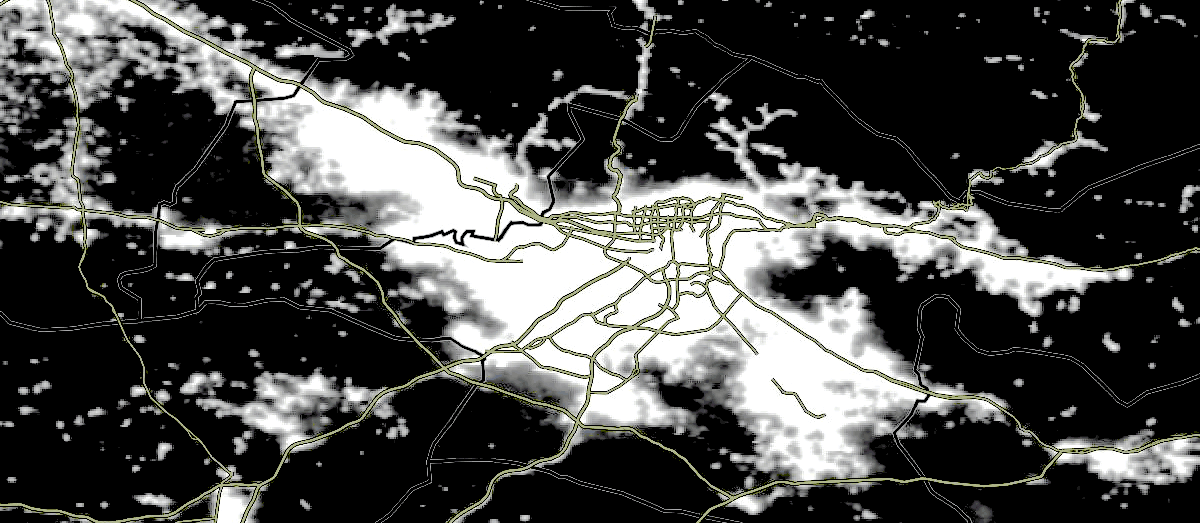It’s common belief that Internet shutdowns affect a region’s/country’s economic productivity, including disrupting local businesses, trade, and broad economic activity. However, a major challenge lies in measuring exactly how the impact of Internet shutdowns shows up in economic indicators.
Ideally, any such measurement involves having regularly updated data (for example, daily or weekly) at a granular level (local or sub-national). In the case of the recent shutdowns in Iran, following the death of 22-year-old Mahsa Amini and subsequent protests, a typical economic indicator used by the media has been the affect to the Gross Domestic Product (GDP) per person.
When there are no other indicators, economists rely on GDP to talk about the impacts of local events (for example, natural disasters). However, the GDP is typically calculated by a country’s statistical offices (or other multilateral institutions such as the World Bank) each month. A measure such as GDP is also intended to capture country-level changes and might be too coarse an indicator to pick up any changes due to Internet shutdowns in a particular city or region, or disruptions to a specific service.
How Then do we Track the Impacts of Internet Shutdowns?
Spurred by the COVID-19 pandemic, economists have been developing sharper, technology-intensive methods to study the impacts of events in real time. This can help inform the impact of Internet shutdowns too — relying on the same statistical techniques can generate the high-frequency and granular data that we need.
The International Monetary Fund (IMF) highlights the value of using high-frequency indicators in a method collectively described as ‘nowcasting’, which relies on a wide variety of data sources, including:
- Stock market indicators
- Activity at trade ports (tracking how many shipping vessels enter and exit a port)
- Satellite imagery of night-time lights that help track economic activity at night.
Recently, we collected and analyzed data on all of these indicators (between 16 September and 16 October 2022) as part of our contribution to the Technical Multistakeholder Report on Internet Shutdowns: The Case of Iran Amid Autumn 2022 Protests.
Stock market data is freely available and relatively easy to analyze. However, accessing and analyzing the other two indicators have their challenges.
Data on trade ports is freely available from the United Nations Conference on Trade and Development (UNCTAD). However, it is updated every ten days. This means that generating quick estimates of the impact on trade is not always possible.
Data on night-time lights is freely available from the National Aeronautics and Space Administration (NASA) Earth Observatory. The Visible Infrared Imaging Radiometer Suite (VIIRS) provides high-resolution data daily via the Suomi satellite — Figure 1 shows changes in night-time lights (and economic activity) during the Internet shutdowns in Iran starting 15 September 2022.
Figure 1 — Night-time light image from NASA Worldview, Tehran.
Interpreting this data to track the impact of Internet shutdowns in Iran was challenging though, due to:
- Changes in night-time economic activity may have been correlated with night curfews or other restrictions on movement imposed by the government of Iran, and not necessarily just Internet disruptions.
- Images for specific regions (Sistan and Balochistan and Tehran) showed increasing night-time activity (measured by luminosity) at the height of the Internet shutdowns in Iran. This could erroneously be interpreted as greater economic activity accompanying an Internet shutdown, which may not necessarily be true.
- Night-time light data is imperfect since an increase in luminosity is also associated with other phenomena, such as fires and cloud cover.
Although nowcasting data shows potential as an improvement over coarse measures such as the GDP, we still have a long way to go in terms of using it to measure the impacts of Internet shutdowns.


